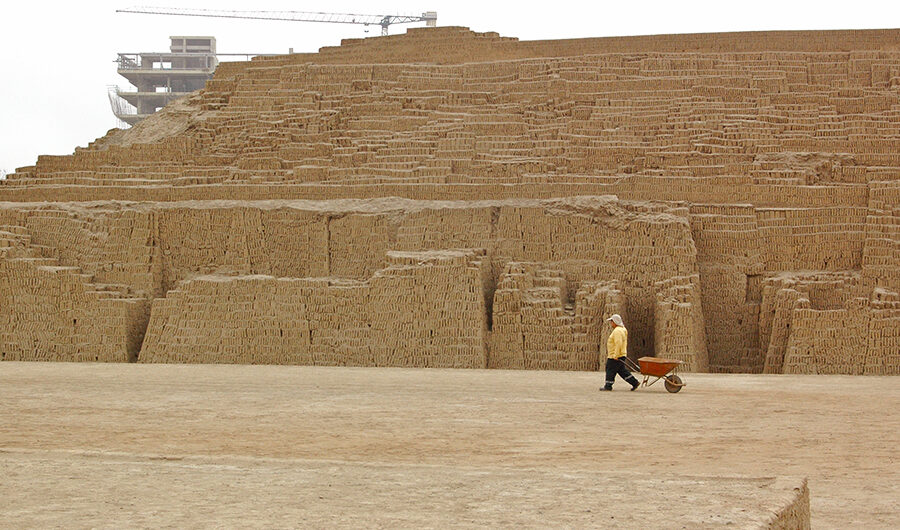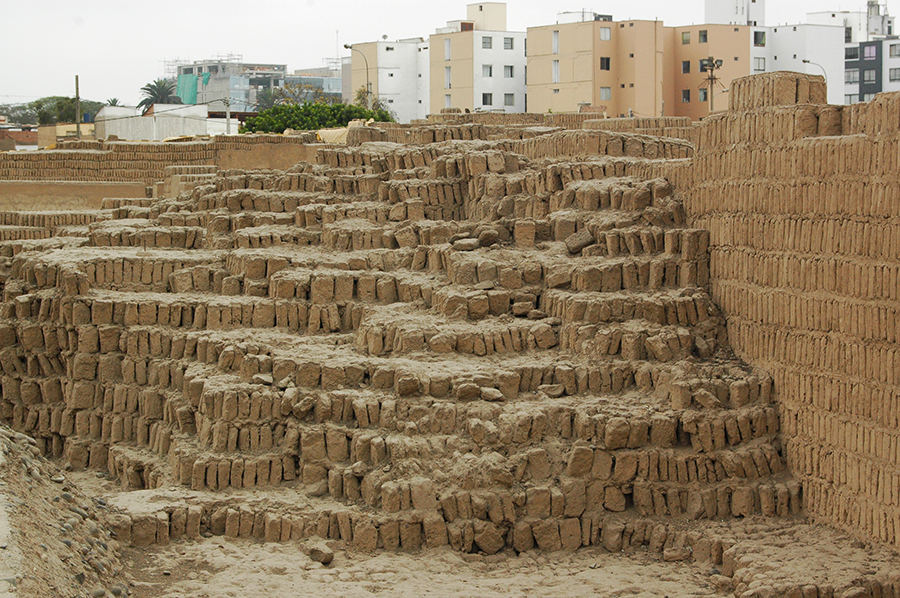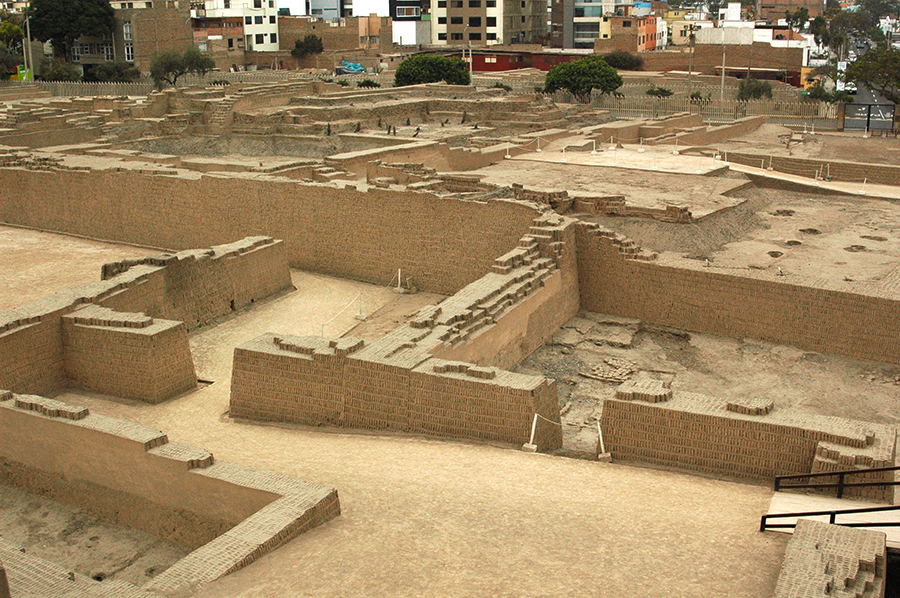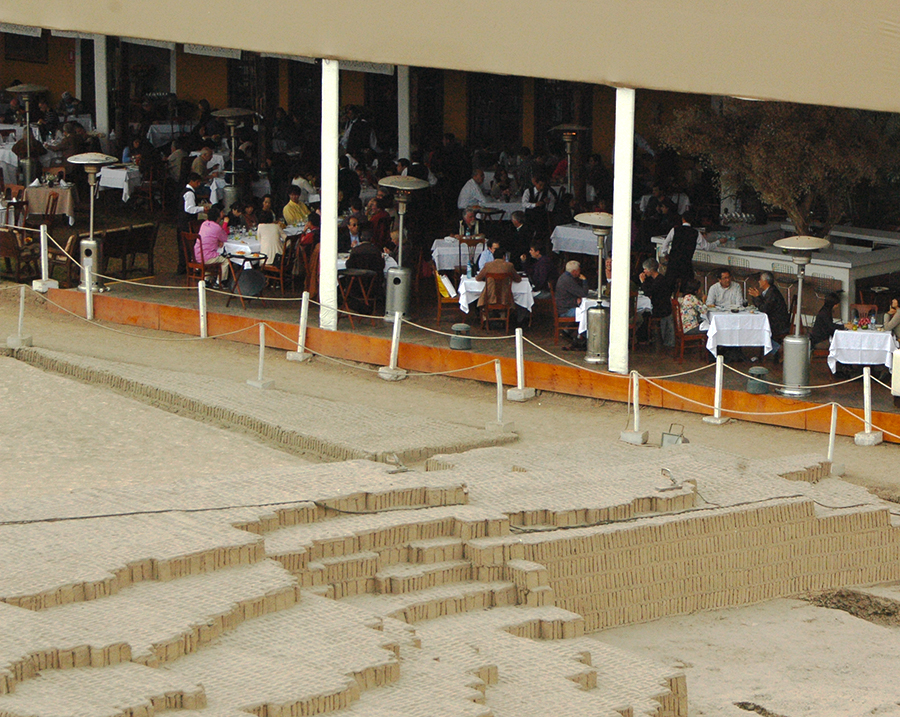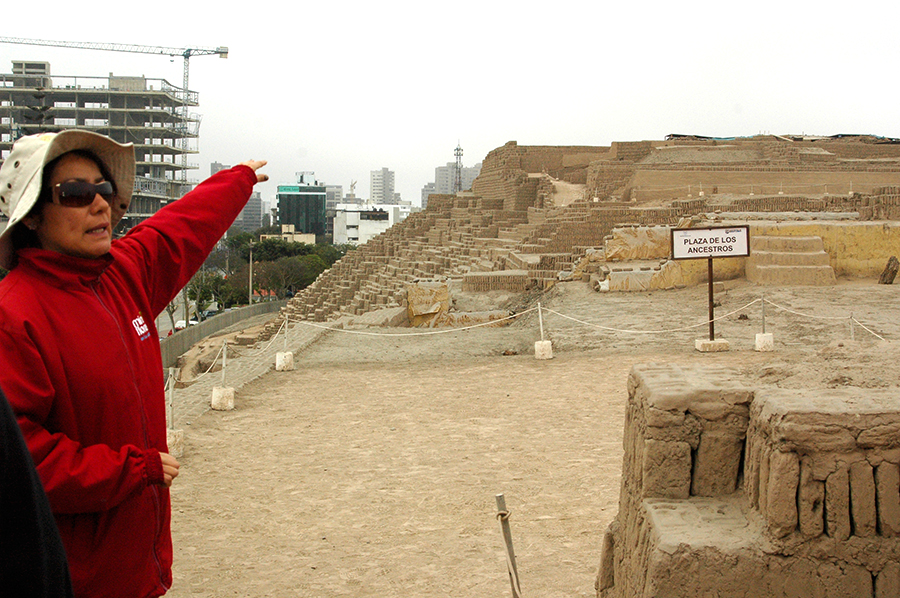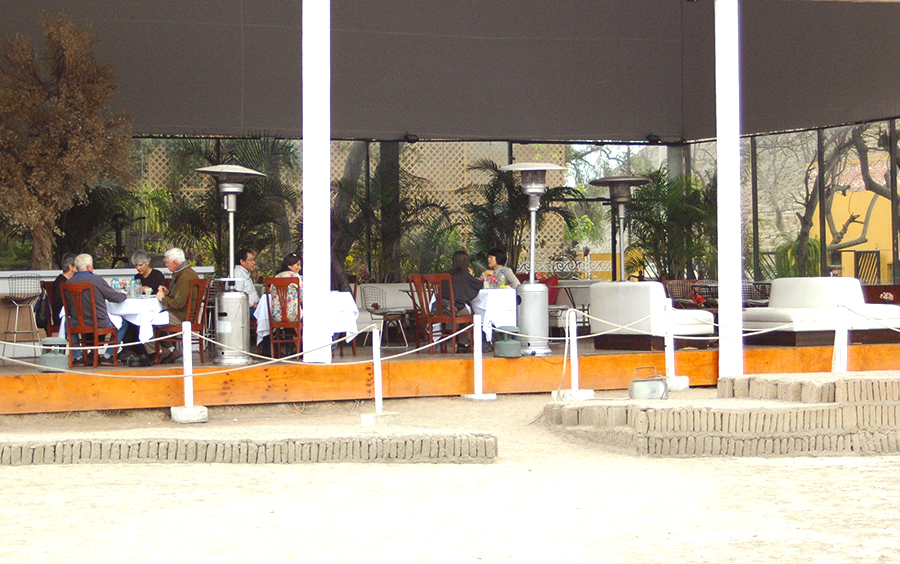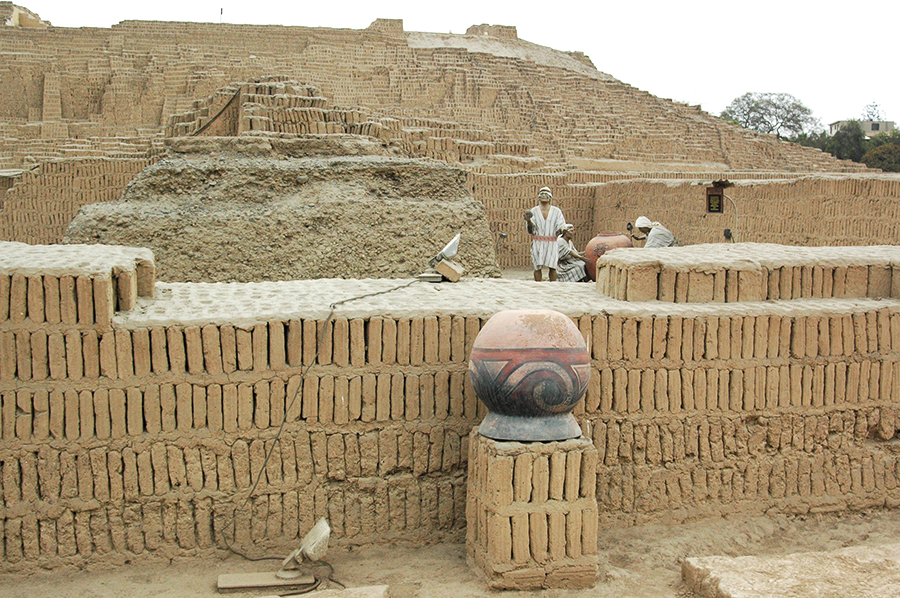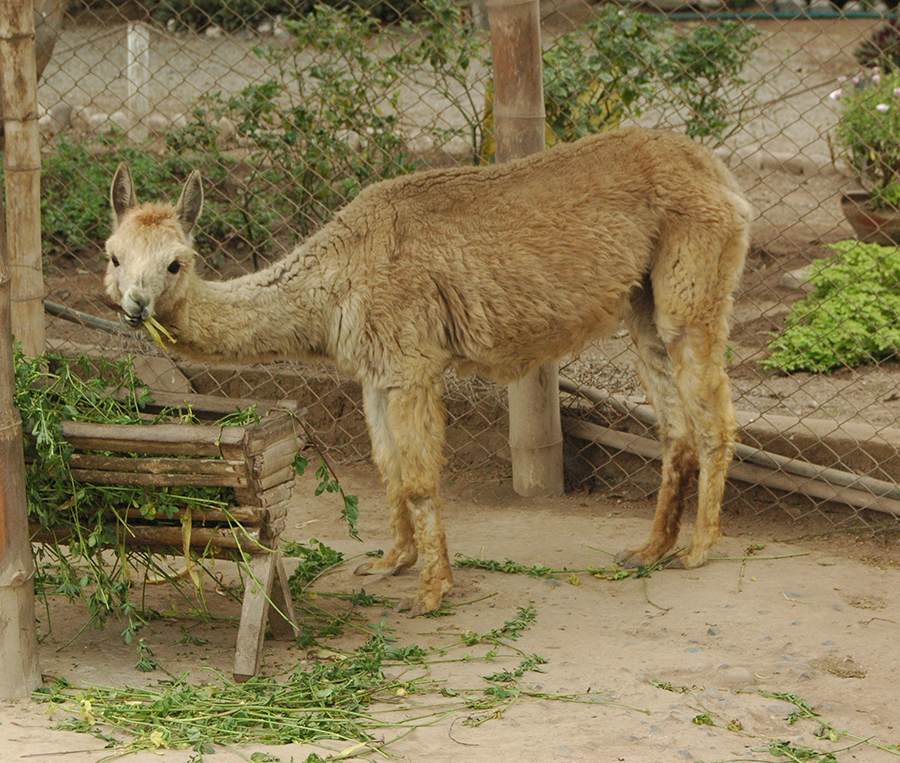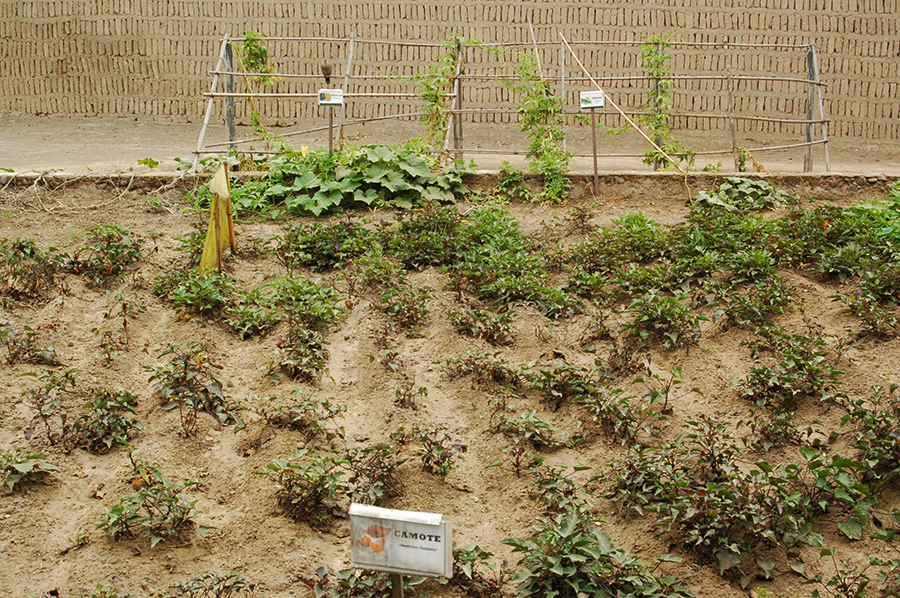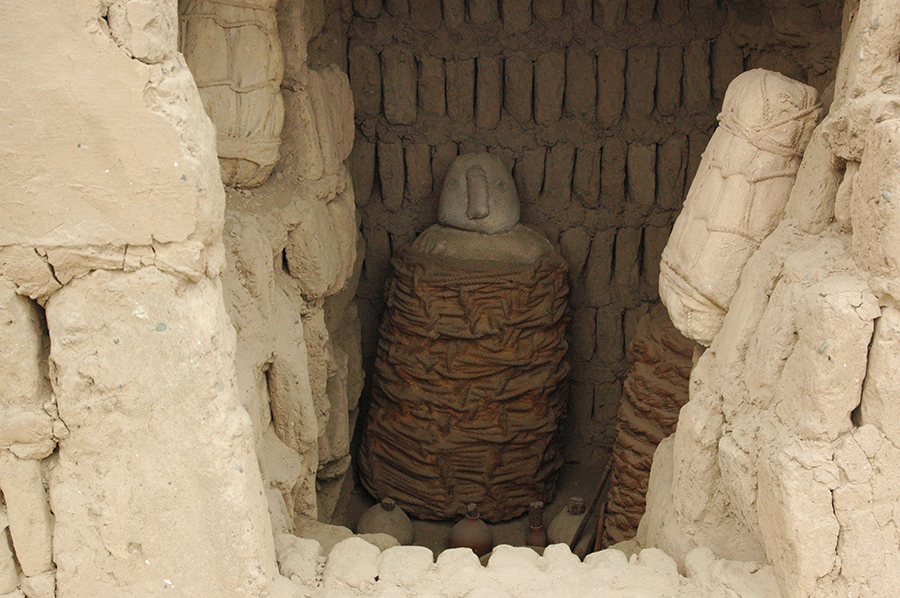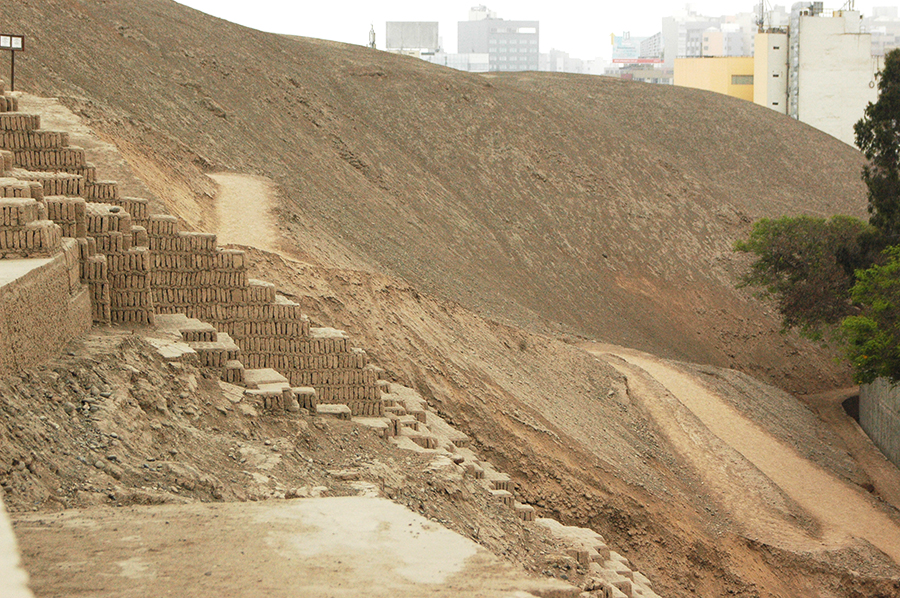It was during a walking tour of the neighborhood of Los Olivos in Lima that I encountered my first huaca. I stood behind a row of houses on a patch of dusty land that had a few hills and a sign that said “No Trespassing”, which failed to deter any of the many trespassers who were crossing the open expanse to reach their homes on the other side. Huaca Pucllana is one of the highlights of a visit to the capital, Lima.
Huaca Pucllana Lima
A huaca, as I later found out after some investigation, comes from the Quechua word wak’a, which means “sacredness” or “holiness”. The term was used to describe objects with a spiritual significance like a sacred ritual or offering or to refer to the afterlife in pre-Inca cultures.
Worship and Sacrifice
Huaca is also used to refer to the ceremonial and administrative centers built with stone or adobe, which were used for community gatherings for sacred worship, sacrifices and rituals as well as social, administrative and political meetings. The remains of huacas, such as the one I encountered in Los Olivos, are scattered throughout Peru, many neglected, forgotten or built over by modern development. However, efforts to restore and protect these archeological sites have increased in recent years, and municipalities have built fences around huacas to protect them from vandalism and damage.
Huacas in the heart of Peru’s capital
Lima, a fertile coastal region, was the home of many ancient cultures in Peru and is thus replete with the remains of huacas—more than three hundred are scattered throughout the region. Two well-preserved huacas in Lima are the Huaca Pachacamac in the south and the Huaca Pucllana, located right in Miraflores.
The construction of Huaca Pucllana
I recently visited the Huaca Pucllana or Huaca Juliana, as it is also called, which was a pyramidal temple built by the people of the Lima culture between 400 and 700 A.D. It was constructed with handmade adobe bricks, set in a pattern that limited the movement and impact during earthquakes. It once spanned more than 16 hectares, but by the time the Incas arrived in the fifteenth century, it was merely a hill, the architectural structure eroded by weather and natural forces. The temple was dedicated to a goddess of the sea, considering that the Huaca Pucllana is situated less than two kilometers from the Pacific Ocean. On a clear day the guide told me, stretching her arm in the direction of a sea of buildings, from one of the seven platforms of the pyramid, you could see straight out to the ocean. It was hard to imagine with the buildings, the urban development encroaching upon the Huaca Pucllana on all sides.
Archaelogical Work: Excavation and Preservation
Excavation and preservation of the Huaca Pucllana began in the 1980’s when the ruins looked much like those of Los Olivos, a mound of soil with stones sticking out at various points. The guide explained that about 95% of the stones are original in the Huaca Pucllana, but archaeologists have had to do some restoration and reconstruction based on the evidence they found there. The stones made by the archaeologists are marked with light streaks to differentiate them from the original. Within the next decade or so, they expect to finish the final two platforms of the seven on the pyramid and to work on the large portion of the huaca that remains unexcavated, still a smooth hill of soil like the one the Incas encountered years ago when they spread into Lima.
Mummified remains discovered
After the Lima people, the Wari people used the Huaca Pucllana and built interconnected, enclosed structures on the site. However, the Wari mainly utilized the Huaca Pucllana as a burial site. Archeologists have found the remains of mummified humans, meaning that those buried there were elite, entombed in graves built below the different plazas throughout the huaca and within the stone walls. Many remains found in the huaca were also those of children who were sacrificed for the goddess as well as traces of food in the vessels that were another form of offering. Additionally, the vessels, shattered during rituals were decorated with wavelike designs to represent the sea and goddess.
Ancient Diets revealed
Scientists were also able to determine the diet of the Lima people, and there is a small garden in the Huaca, where these crops are grown including, quinoa, sweet potatoes, yucas, avocados, lúcumas, green beans, caigua, pumpkin and squash and coca leaves, a sacred plant with medicinal use for the pre-Inca and Inca peoples. Along with these crops, there are cotton plants growing just beside a pen of camelids, llamas and alpacas among them. The guide pointed to a droopy-eyed llama and said that the llamas were brought down to the coasts as pack animals, and the alpacas were valued for their fine hair that could be used to create warm clothing.
Dine with a view at Huaca Pucllana Restaurant
After an encounter with the ancient world at the Huaca Pucllana, you can also eat right inside of the archaeological site at the Huaca Restaurant, one of Aracari’s recommended dining spots for Peruvian dishes made with many of the same ingredients you can find growing in the Huaca Pucllana garden. In the evenings, too, you can enjoy a Pisco Sour and gaze out at the illuminated Huaca Pucllana, imagining all of the history sprawling before your eyes.
Book a trip to Huaca Pucllana
You can visit the Huaca Pucllana on a tour of historical sites in Lima with one of Aracari’s expert guides or specialist guides as part of a private, tailormade tour. Contact us today.

